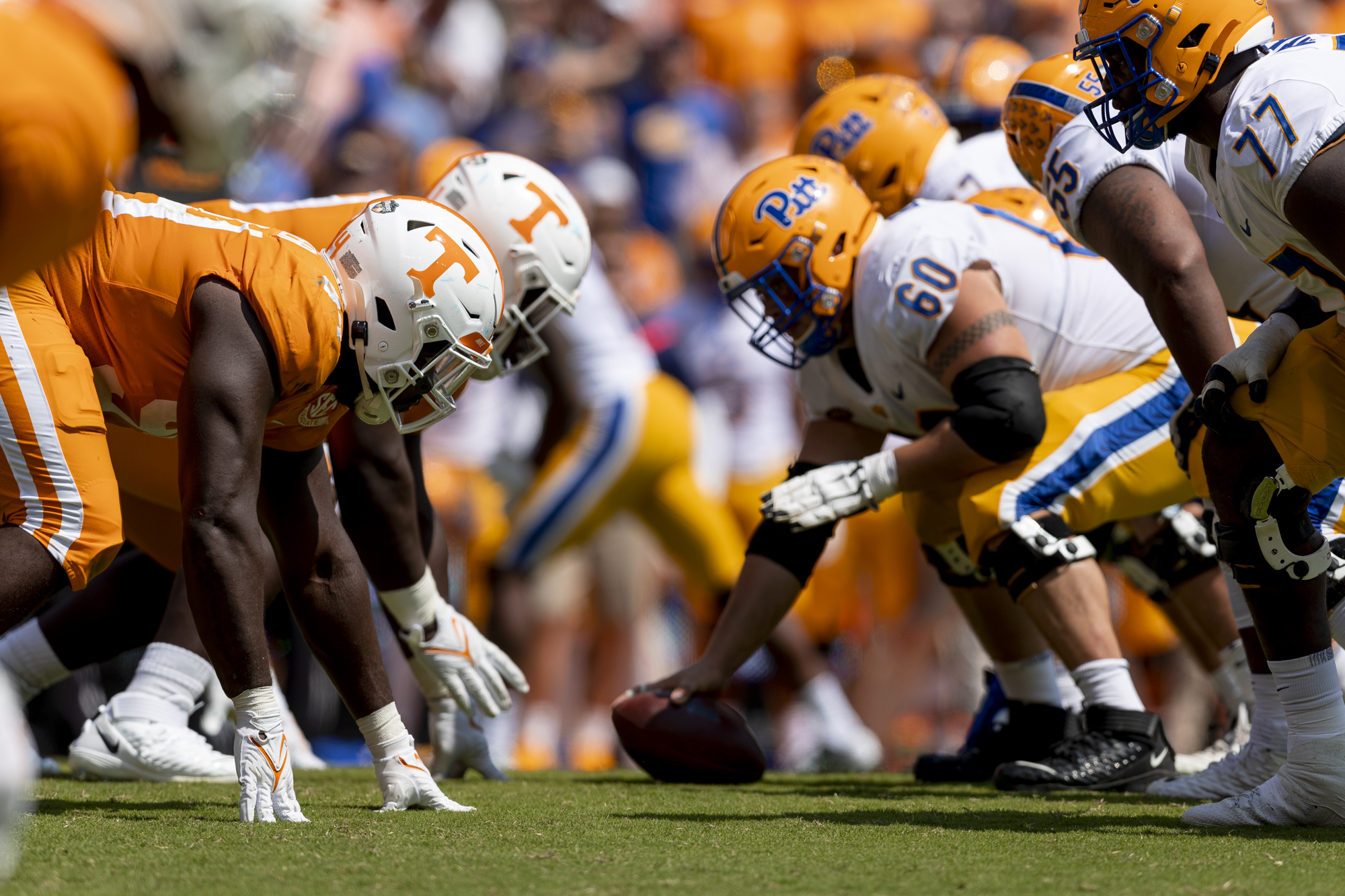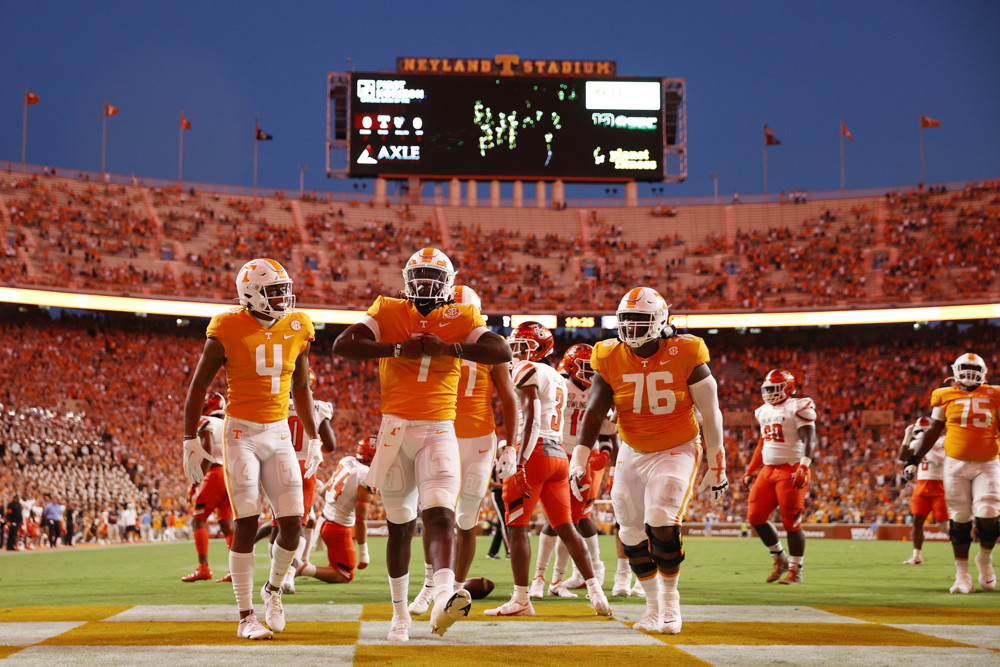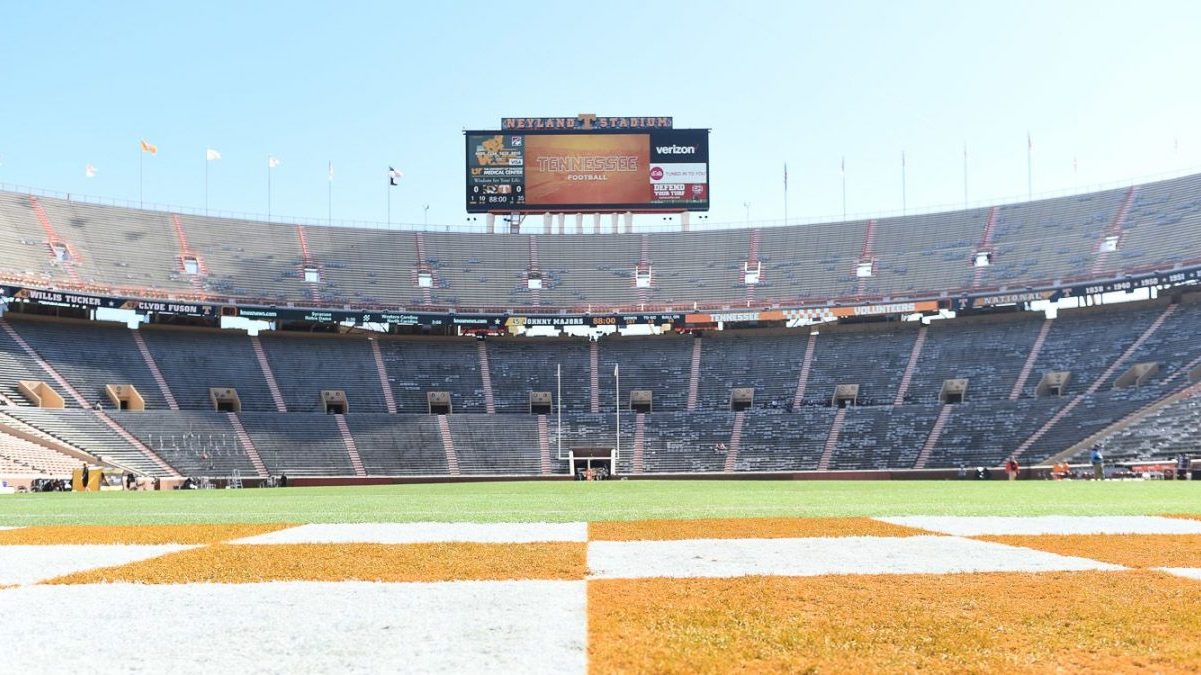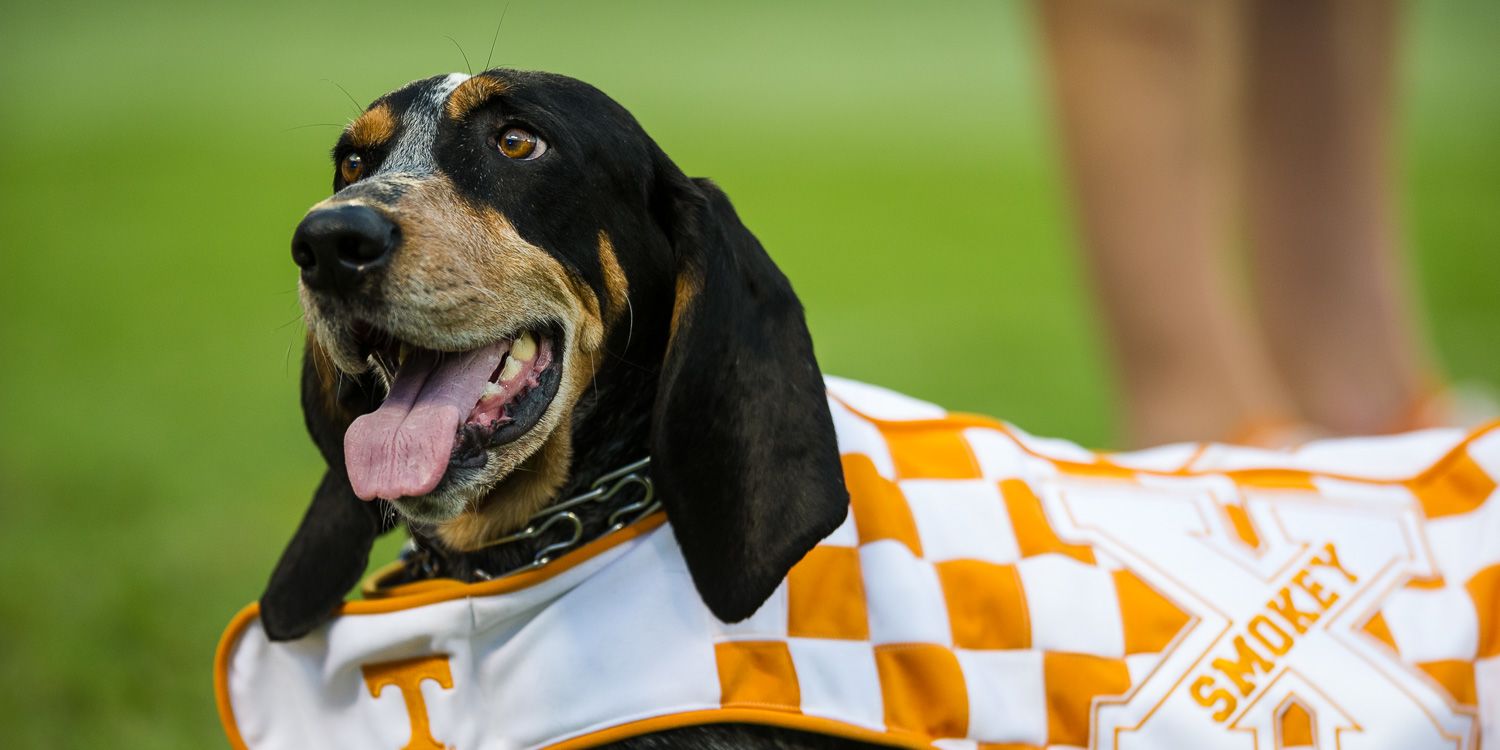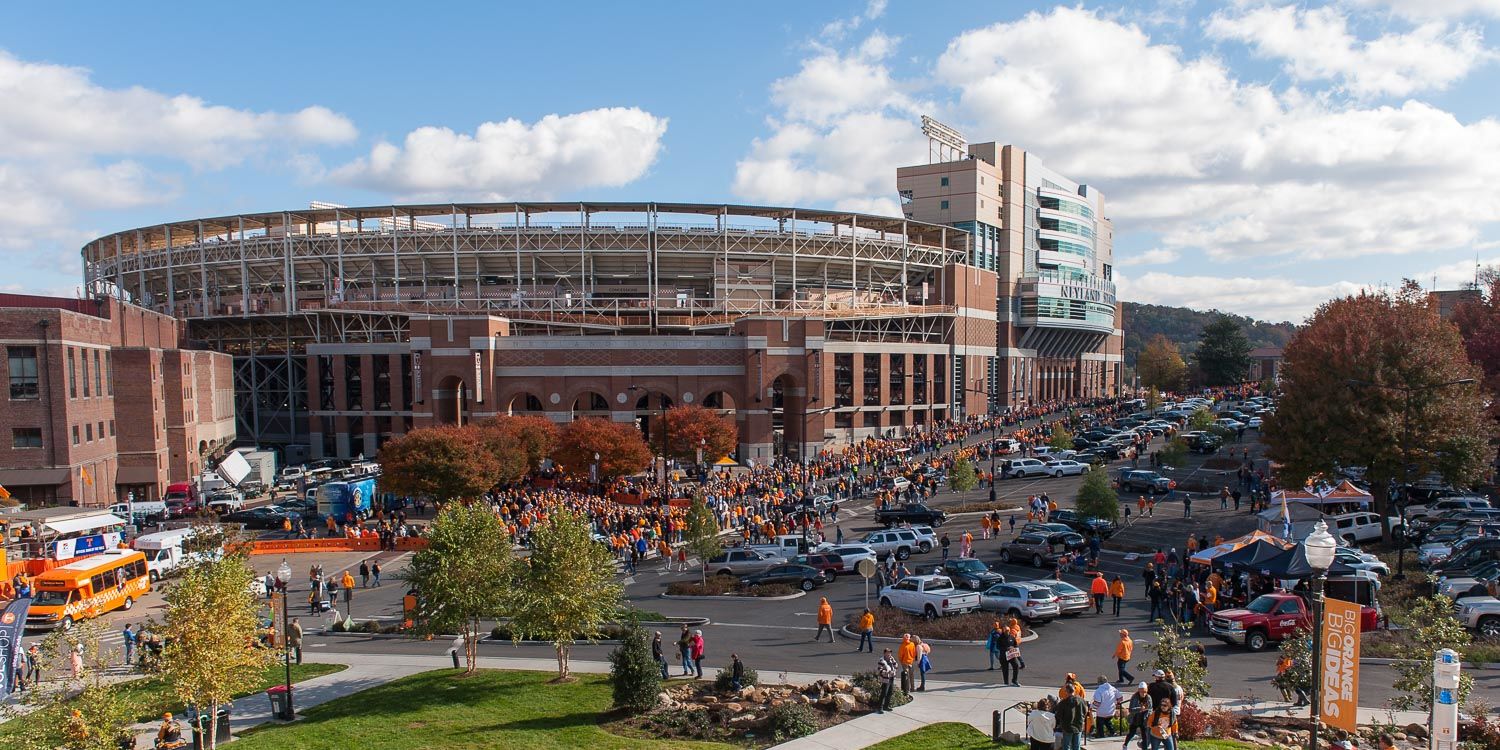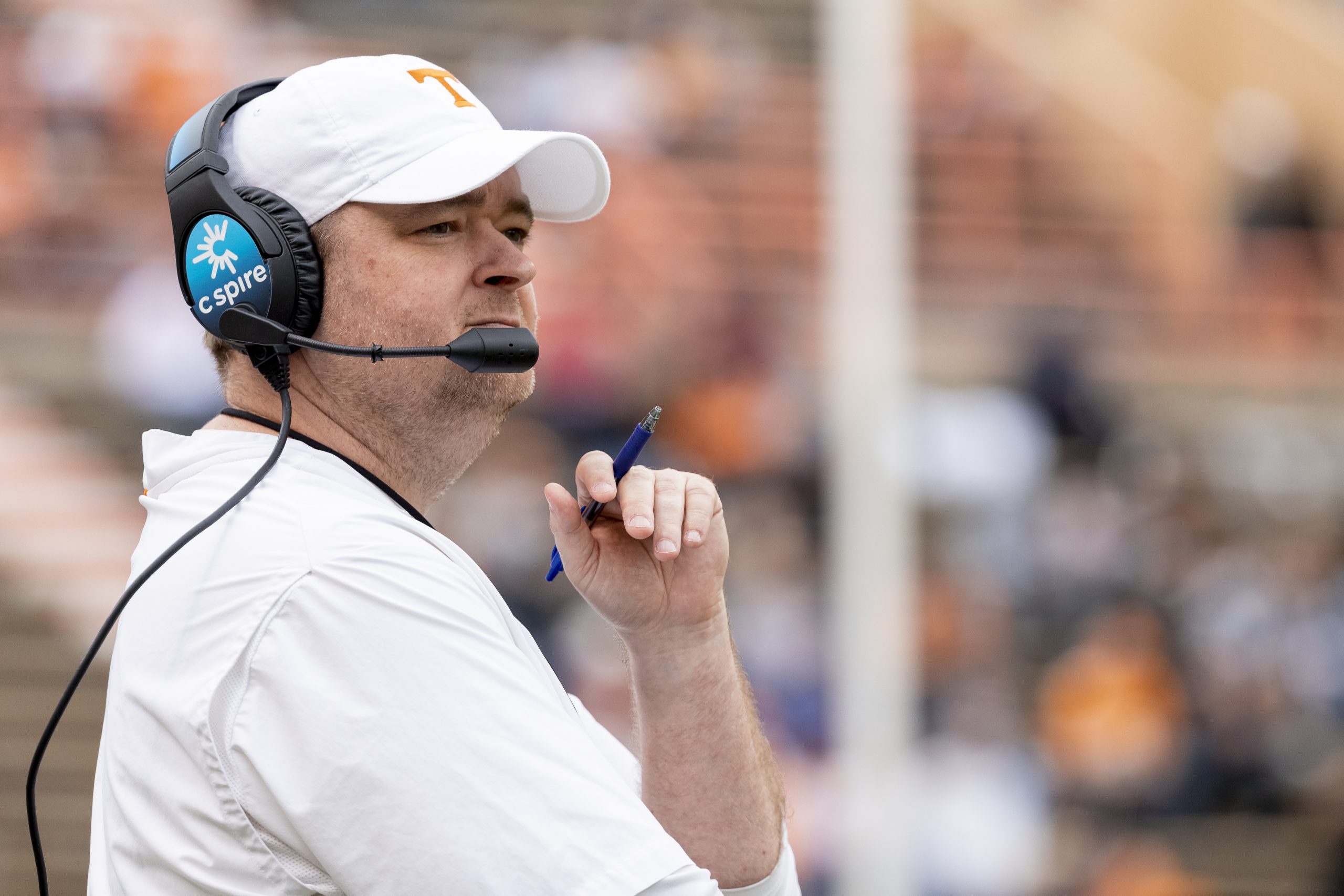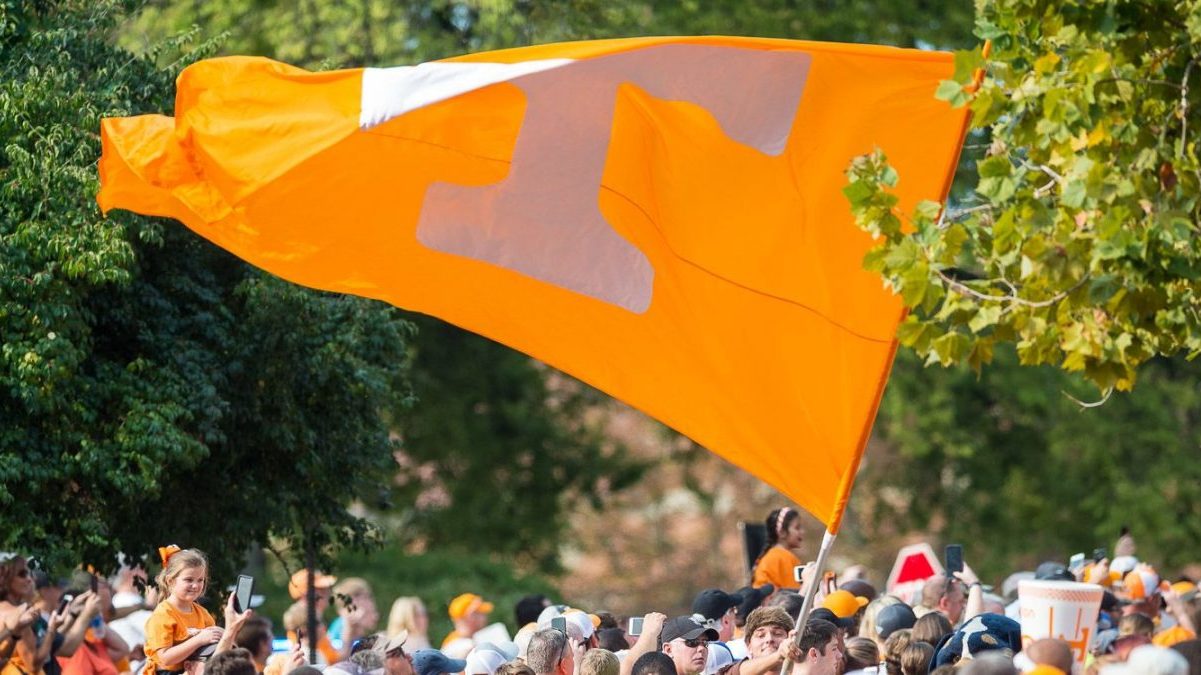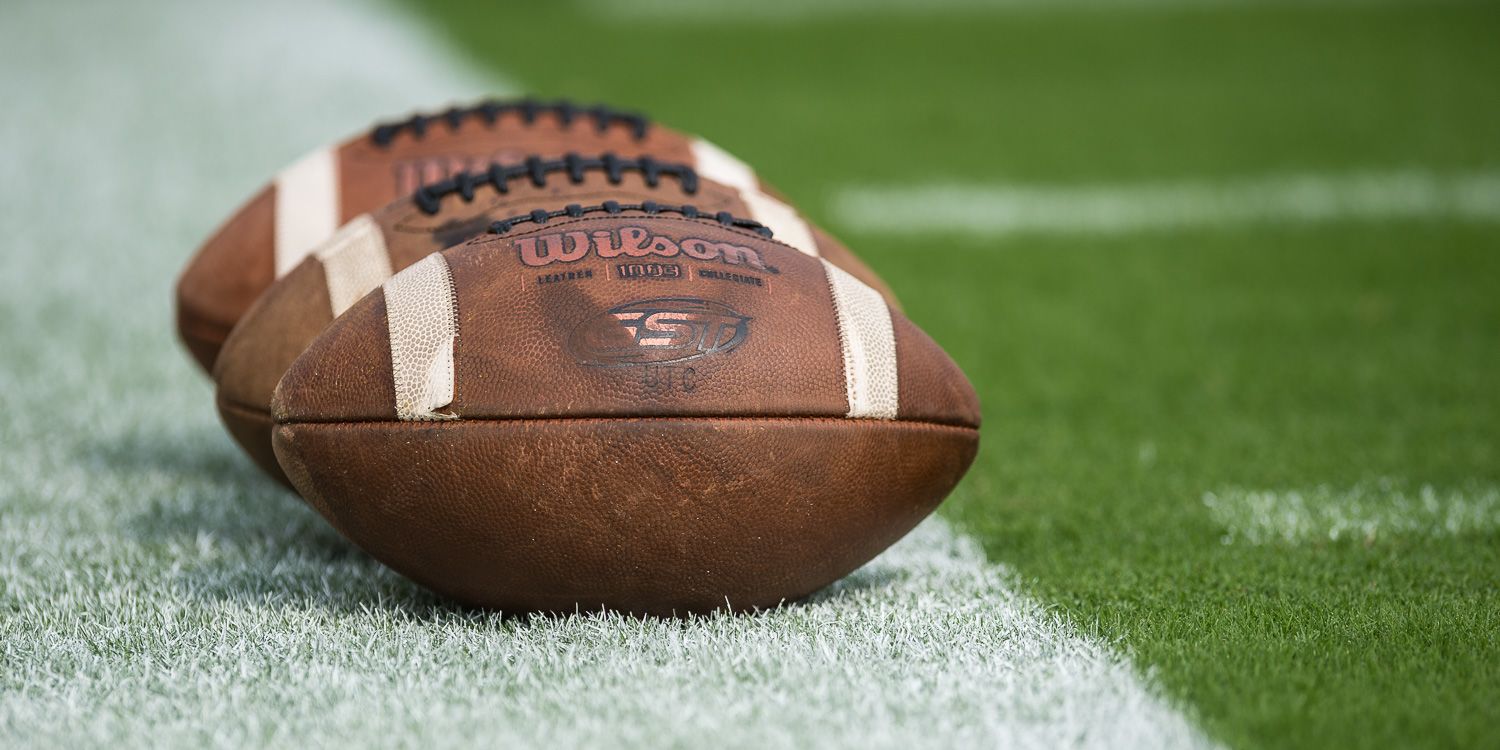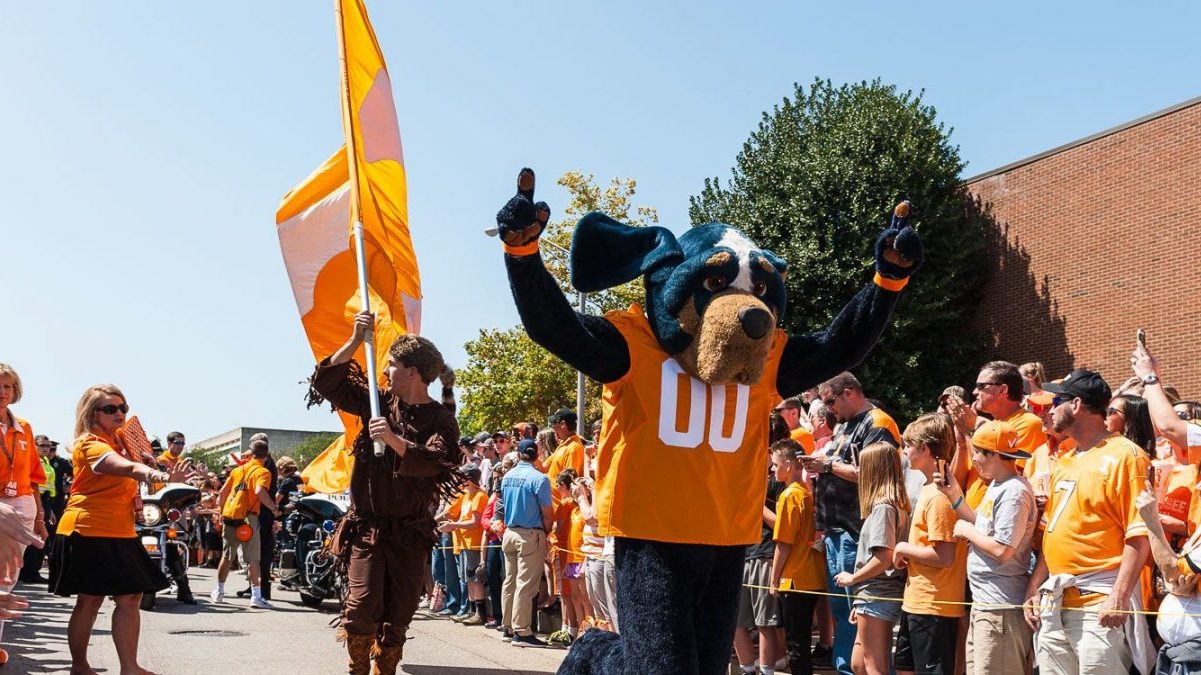What is the most important piece of information from this game?
Tennessee’s offense lost its starting quarterback midway through the second quarter, its 1B tailback to health protocols, its 1A tailback after eight carries, a starting wide receiver on the second possession, and its starting center to an ankle sprain last week. The bulk of the work today was done by the backup quarterback, a true freshman tailback, receivers who combined to catch just seven passes, and two tight ends who caught nine…or half of their total from last season.
But that group got 374 yards at 5.67 per play, and 34 points. In the last four years, the Vols have scored more than 34 points in regulation against the following FBS foes: 2020 Missouri (35) and Vanderbilt (42), 2019 South Carolina (41 with two special teams scores)…and last Thursday.
That group also turned it over thrice, each of them deadly: the two fumbles by the quarterbacks gave Pitt the ball inside the UT 30, and of course Hooker’s interception came inside the Pitt 35 with a chance to tie the game. They also got real frustrating inside the red zone, which is what cost UCF against Pitt two years ago. In that one the Knights scored two touchdowns in five appearances inside the 20. Today, the Vols cashed in on the blocked punt right away, then kicked a field goal on 4th-and-3 from exactly the 20 yard line for a 10-0 lead. But after that: 1st-and-Goal at the Pitt 5 turned into a 48-yard field goal. (Shout out Chase McGrath, whose kicks get you through at least denial and anger and well into bargaining before they decide to go in.)
The Vols got a red zone score late in the third from Hooker to Jacob Warren, and another when Jaylen Wright got in from the one. But after a dubious spot on third down, the Vols were denied on 4th-and-1 at the three yard line with six minutes to play. In the books, that’s three touchdowns in six red zone appearances, plus the final interception from the Pitt 34.
In this way, it actually does feel a bit like the offense-first version of Lane Kiffin’s Week 2 against UCLA, which is how it looked to most of us from months away. Lots of turnovers, a stone cold fourth down stop late, quarterback questions, etc. As we pointed out this week, the Vols were 10-point favorites in that one. Today was a toss-up, the earliest that kind of temperature reading has come for any of these year one coaches in Tennessee’s rebuild. And it was true to form, with Pitt winning 41-34.
But given those three turnovers, is there something meaningful we can take away from this on the positive side?
Add in the 13 penalties (two shy of the school record via the media guide) for 134 yards – let’s see how long that sticks around to see its true meaning – and there’s room for, “Well, if we don’t turn it over three times and commit a thousand penalties…” or, “Well, if we get healthy…”.
This is hard to figure out too, because we don’t know Pitt. We’re unsure how good they are, though I thought Kenny Pickett was very much that today, and so we don’t know exactly what to trust here. Even more than you expect after just week two. Much more than you expect after this kind of toss-up.
And perhaps the biggest curiosity: Tennessee’s defense, which gave up 41 points and didn’t force a turnover…but stopped Pitt on third down a dozen times. Some of this is we don’t know how to watch this kind of football wearing an orange jersey yet: Pitt got 397 yards, but did so on 82 plays, just 4.8 yards per play. If the name of the game with Heupel is possessions, the Tennessee defense opened the game with three straight three-and-outs, then made Pitt kick field goals in the red zone twice in the second quarter to keep the Vols in it. They opened the third quarter with another three-and-out. And then they scored three more on crucial possessions after the Vols cut the lead to seven twice and were stopped on fourth down late.
I think the defense – also playing without Byron Young for the last time – did its job today. That’s encouraging.
What do we know for sure? We need to take this team’s temperature again in Gainesville.
The Gators, now perhaps in a quarterback controversy of a different sort, are likely to offer few hints before then since they play Alabama next week while the Vols host Tennessee Tech. But we might at least get a sense of Joe Milton vs Hendon Hooker in that one.
We thought we’d learn a lot, but the volume of backup names, turnovers, and penalties makes that all harder to trust. I think Tennessee’s defense did a good job, but let’s see it again in two weeks. I think Josh Heupel did a good job putting us in position to execute today, but we’ll get plenty more data on that. One challenge for him that he perhaps experienced at Missouri, but not as the head coach at UCF: the Vols played their butts off today. But we’ve lost a lot, and even with some unhappy players already out via the transfer portal, those butts are harder to play off if you keep losing. If he can keep this team together and playing hard, I’m hopeful the most important thing – moving forward – will follow.
Go Vols.
